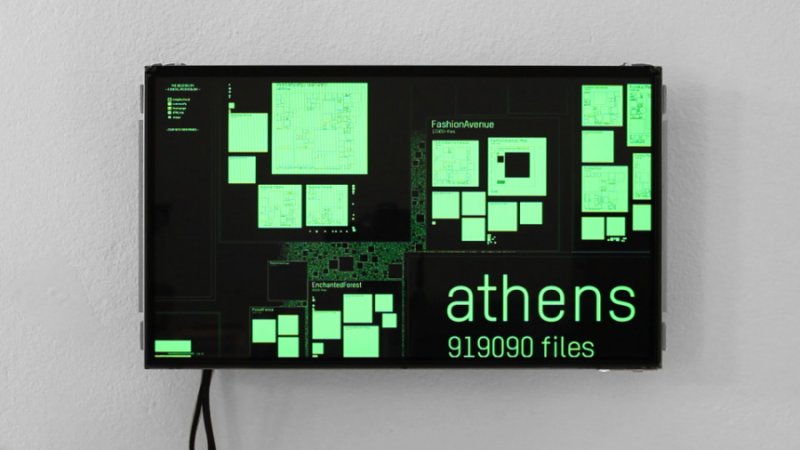
In 2011, Richard Vijgen created The Deleted City. It is an interactive piece that uses the 650-gigabyte backup of Geocities. Geocities was a free webhosting provider that was set up like a city, where users were free to upload information about a topic of their choosing. Users were provided with a “free piece of land” in the Geocities. This piece of land was to be their “digital home” where they would publish their information. Their digital home was located in a neighborhood, and the neighborhood users were placed in was based on the subject matter of the digital home. At its peak the Geocities was the third most visited site on the Internet and millions of users had contributed to its massive database. Unfortunately, in 2009 Geocities was shut down. But before it was shut down and deleted, it was backed up. The back up was then used to create The Deleted City. [1]
In its time Geocities was impressive because of the high level of user participation. In some ways, this user participation is similar to collaborations themes discussed in Art & Electronic Media (AEM). AEM emphasizes through examples such as, E.A.T/9 evenings: theatre & engineering that with the collaboration of different disciplines there is a greater possibility of innovation and breakthrough. [2] Without Geocities allowance for a wide range of topics the website would not have been nearly as popular.
The Deleted City is a historical piece, a “digital Pompeii”, that allows the viewer to interact with a piece of Internet history [3]. In todays world things are fast paced, especially on the Internet, The Deleted City is interesting because it takes a relic from the past and forces the participant to reflect on what was, and how far the Internet has come. By interacting with the piece of history the participant is also reminded of what the Internet is today. Geocities was eventually abandoned and shut down because users were leaving the site for social media. Perhaps it is possible in the future a piece much like this one could be installed using a back up of Facebook or MySpace.

This piece reminds me of the piece Glyphiti by Andy Deck. The pieces are similar in that Geocities and Glyphiti’s success were dependent on user contribution. However, despite this similarity there is an interesting contrast. Like a real city, Geocities was dependent on the continuous growth of user contribution and data. While Glyphiti was dependent on user contribution as well, the piece demanded that users build on top of each other’s work. In this difference the two pieces communicate different themes of ownership and permanency. Geocities’ exponential growth, followed by its memorial in the form of The Deleted City, conveys a message of permanence. Though the Geocities is no longer present on the internet its legacy continues in The Deleted City, and so the users ownership of their digital home is continued as well. Glyphiti demonstrates a completely different message. The fact that users must build their own work on top of the works of others conveys a complete lack of permanence, demonstrating that nothing lasts.
[1] http://rhizome.org/artbase/artwork/53493/
[2] Edward Shanken, Arts & Electronic Media, 2009 p 182
[3] http://deletedcity.net/
